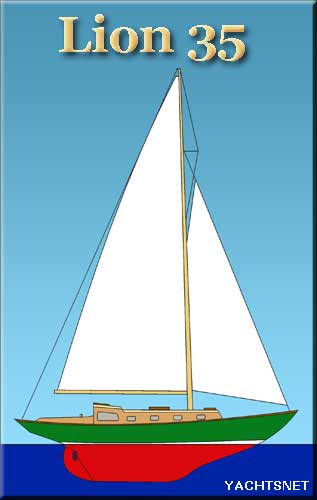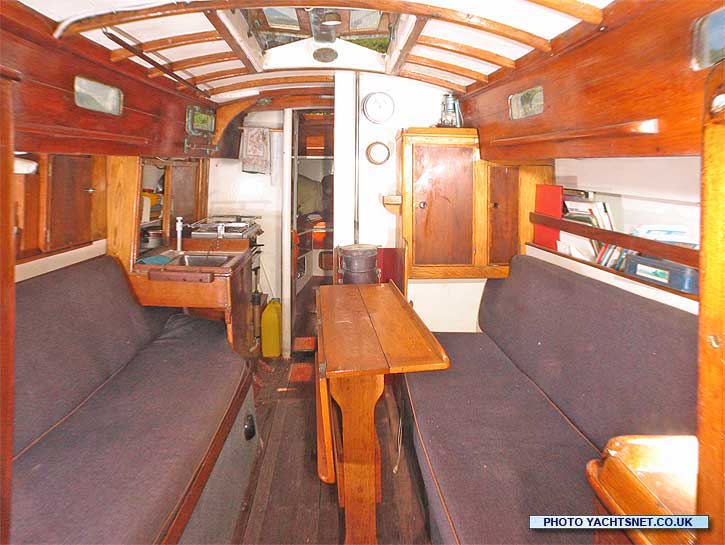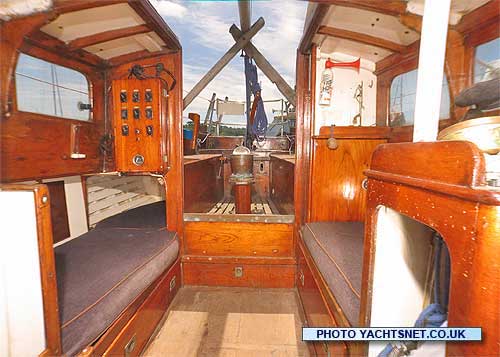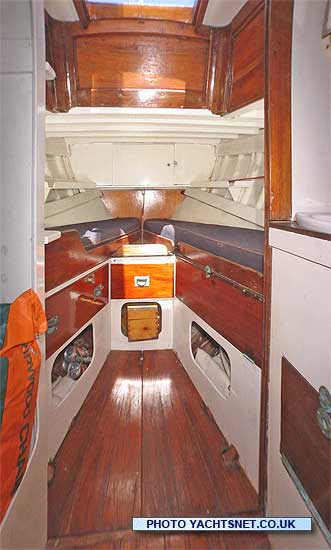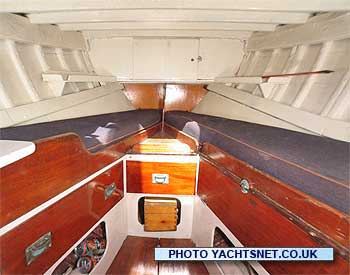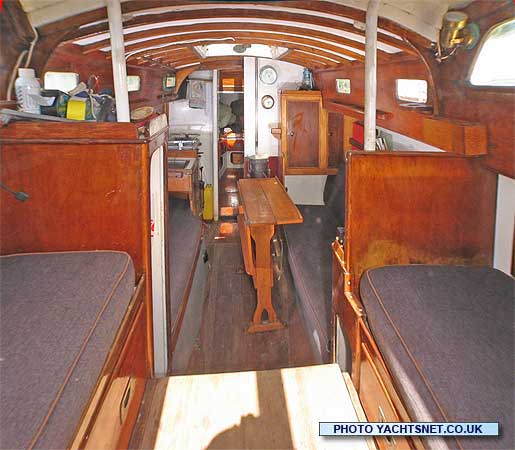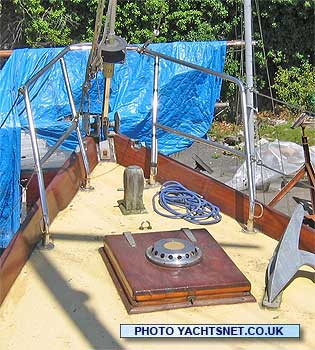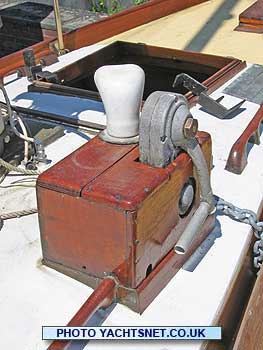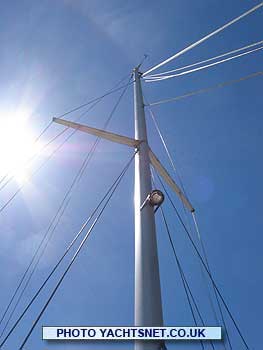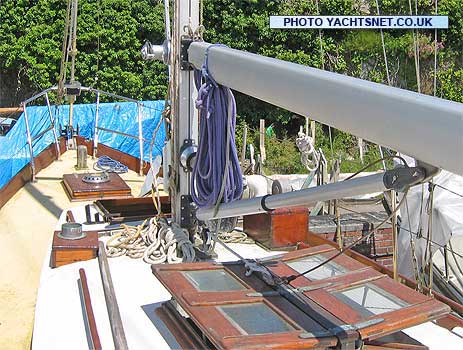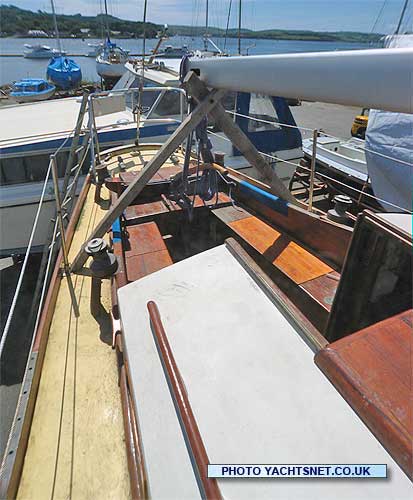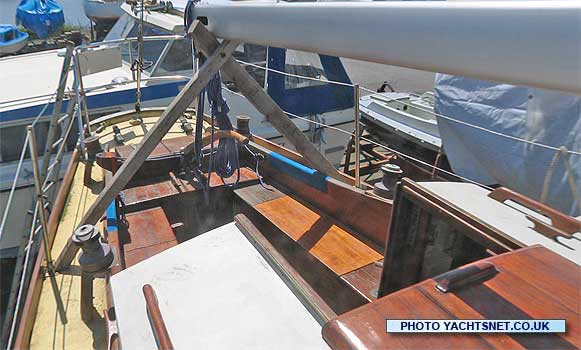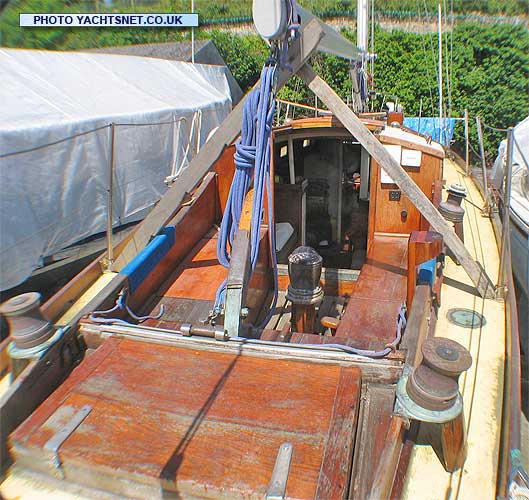| |
|
|
|
|
|
|
|
| © Yachtsnet Ltd. 2000/2025 |
|
|
|
| |
|
|
Yachtsnet's
archive of boat details and pictures
|
| |
The following information and photographs are
displayed as a service to anyone researching yacht types. HOWEVER THE PHOTOGRAPHS AND TEXT ARE COVERED BY COPYRIGHT, AND MAY NOT BE REPRODUCED WITHOUT THE PERMISSION OF YACHTSNET LTD. Details and photographs
are normally based on one specific yacht, but could be a compilation.
No reliance should be placed on other yachts of the same class being
identical. Where common variations exist, we have endeavoured
to indicate this in these archive details. |
Robb Lion 35
|
Brief details |
Builder |
Various |
Designed by Arthur
C Robb in 1950, the Lion design was a top-class racer in her day,
winning several major races - one yacht twice winning the Sydney-Hobart.
Lions were built in many yards: in England larch on oak was a common
hull material, whilst a substantial number of all-teak Lions were
built by Cheoy Lee in Hong Kong. Prices for these boats can be highly
variable, much depending on construction and condition. |
LOA |
35' 2" |
Sail area |
480 sq ft main and working jib |
LWL |
24' 0" |
Rig |
sloop |
Beam |
8' 9" |
Cabins |
2 |
Draught |
4' 8" or 5' 7" |
Berths |
5 |
Displacement |
14,200 lbs |
Engine |
usually originally inboard petrol |
Ballast |
5,600 lbs |
BHP |
typically 12- 30 |
Keel type |
Long keel with iron ballast |
|
|
Arthur Cecil (Arthur C.) Robb (1908-1969)
was born in New Zealand but worked mainly in England, both
as a yard manager at a boatbuilders in Scotland, and as a
naval architect. During World War II he was a Reserve Officer
in the British Royal Navy, attaining the rank of Lieutenant-Commander,
and worked on the design of the airborne lifeboat.
The Lion is one of his most famous yacht designs, around
150 having been built throughout the world. With long overhangs
and a graceful sheerline, coupled with a long low coachroof
terminating in a small doghouse, she really is a very elegant
yacht. Two different versions were built, one being shallower
draught at 4' 8", whilst this yacht is the deeper version
at nominally 5' 6"
Originally designed as a fractional sloop, with diamond spreaders
supporting the upper mast, yawl rigged versions were also
built. As many of the original hollow wooden masts will by
now have been replaced with alloy masts, rigs will often have
been altered, as the stronger material renders the diamond
spreaders unnecessary. Similarly, the original engines would
typically have been petrol inboards, though almost all will
by now have been re-engined with small diesels. |
|
|
|
